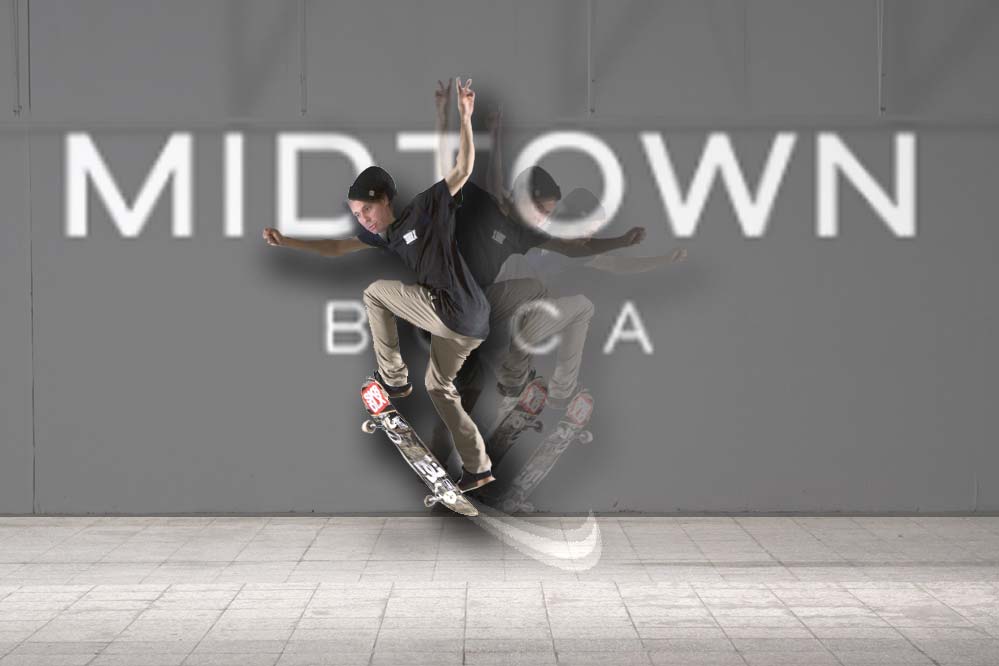After many months and a special election the City has released the conclusions and plans derived from community input around the re-zoning of Boca’s Midtown area. Surprisingly, in spite of the visioning session seemingly being restricted to discussing plans that allowed re-zoning, the conclusions derived from it involve no new residential allowances at all.
A Complete 180 From The City On The Vision of Residential Re-Zoning for Midtown
Back in May of 2018 residents were engaged in a planning session held at the Spanish River Library. The purpose of that session was to gather community input around changes to the zoning of the Midtown area. Crocker Partners did not participate in that community input meeting in spite of being the largest stakeholder. This was due to pending lawsuits Crocker was bringing against the City, asking for monetary damages due to losses associated with the delay of the re-zoning and asking for the re-zoning to move forward. Should the re-zoning move forward the value of the property will greatly increase and investors will see gains. If it doesn’t move forward the investment in the property won’t show as much return. The “damages” are understood to be the difference in value between the re-zoned and presently zoned states of the property.
While some argue that there’s no entitlement towards that difference, that the investment in the property was speculation even with the expectation of re-zoning, others think that Crocker has a chance at recouping the difference and winning a Bert Harris suit against the City resulting in all or some part of the $130 million being argued as damages.
Meanwhile, since the May meeting, Sears has closed as so has Chili’s. The reality of blight creeping in to previously commercial-only zones is hard to ignore for neighbors of Midtown. Crocker has also purchased the iconic and historic T-REX complex, a gargantuan investment, but that site is also restricted in terms of what can be built. With the $130M suit not disappearing by virtue of discussed compromise or negotiation, residents were left hoping that the Small Area Plan in the works by the City yielded a solution that could avoid the lawsuit and prevent blight by defining a fair middle ground that protected property rights for the stakeholders and also maintained quality of life for residents.
From Thousands To None
Monday’s released plans, the changes the City released for the area, involve the addition of no new residential allowances at all. Instead of a middle ground, a demonstration of a willingness to collaborate towards some kind of re-zoning standard, the City’s plan leaves the area zoned as single use: commercial. Whereas the developer had publicized mixed-use plans similar to Mizner Park’s combining of apartments, offices, restaurants and shops, the City’s plans only involve improving the infrastructure of the area without providing for mixed use, keeping it entirely commercial.
The puzzling thing about this zero-residential plan is how it was described as emerging from the May planning meeting the public participated in. I was one of the participants. During that meeting I stated how many people had feelings against adding residential units and how I wanted to express that sentiment in the plan we were asked to collaborate on. I was told by the facilitator at my table that we needed to collaborate on a plan that definitively included residential units. We were asked to collaborate, at all tables of participants, to yield plans together with the other people seated at our table that involved including the high numbers of residential units the developers were asking for.
At the time I didn’t want to produce a plan that included residential units and expressed my discontent with having to do so, but since those were the parameters of the exercise, I followed instructions faithfully. I, with the other participants at my table drew out plans for how a couple thousand new residential units would replace the nearby shopping we use the most.
Nader Salour, the head of Cypress Realty of Florida, owners of the Strikes and Nippers property, was there at the meeting. He scoped out the layout our table yielded and seemed to like how we’d provided for new residents. Elected City Officials didn’t participate directly but they observed closely. Some residents who observed, my neighbors, told me afterwards that they refused to participate under those conditions, conditions where we had to add residents.
Why did the conclusions of that meeting, analyzed since May, end up involving no residential units at all? How did planning session that asked the community for their input on how to provide for new residents end up concluding we should provide for none at all? Where did the 180 take place and why?
I submitted a Public Information Request (159-2018) and the City’s Brandon Schaad got back to me. I asked him “Why the 180? Why is there zero residential in the Small Area Plan when the planning meeting was all about adding residential without exception?” He replied:
(Restricting the exercise to visions including residential ) … wasn’t the intent. I believe that participants were prodded to consider the addition of residential, as we knew that was one of the main issues to be considered as part of the study. Ultimately, there was no consensus on the issue of adding residential – some people were in support of that, some were opposed (some vehemently).
At the August presentation to City Council, we presented results from the workshop, including the differences of opinion on residential. Additionally, we presented issues and analysis that pointed out both the positives and negatives/issues with potential addition of residential. No consensus emerged there either.
Ultimately, our recommendations include consensus items, which are significant. We have emphasized in our recommendations that we’re taking a deliberative, step-by-step approach, and these recommendations are proposed for implementation in the relatively short term. Obviously, our routine planning efforts, and ultimately policy decisions by the City Council, continue on an ongoing basis.
Is there any way the City could have behaved that worked more in Crocker Partner’s favor? Would a collaborative tone that allowed for a reduced number of residential additions with infrastructure improvements planned for the next decade be a more successful posture to take in order to minimize the City’s liability and odds of emerging from the suit unfavorably? Is Crocker going to get that money? Will they also get the re-zoning?
Since I wrote about Midtown about a year ago I’ve had the chance to educate myself beyond my initial apprehensions about it. Many neighbors were upset because it felt like Crocker was “springing this on the community” through backroom meetings. But after looking at the history of it the truth is quite different: the City has been dangling this re-zoning in front of the developer for almost a decade now, discussing it in City Council meetings along with other PMD (Planned Mobility Zones) zones that had gotten approval long ago.
If any zone needs some PMD attention it’s this Midtown zone. We have two universities within walking distance to Midtown and nobody walks or rides their bike to it from them. We live in paradise – a place where it’s such a pleasure to walk around and bike around but the engineering of it literally prevents it where it’s needed the most. When I went to FAU decades ago I paid a lot for rent only one block from Midtown, but you couldn’t walk to the Mall or Crocker Center from where I lived: the canals blocked it. Nothing much has changed with regards to affordable housing west of I-95 in that corridor since that time, decades ago.
The reason why this area never got the re-zoning is pretty clear: it’s a political hot potato. It’s been easier for City Councils to postpone and delay than to do what many residents still oppose. Now it’s gone on for so long that the suit moved forward. Some speculation occurred last week that a settlement was being discussed. Hopefully the results of upcoming negotiations yield an outcome that demonstrates Boca Raton being both a rewarding place to invest and to live. We don’t want to dissuade excellent developers from being attracted to preventing blight nor do we want the way they do it to make our lives less livable.
What do you think? Let Boca know. Comments are enabled below and I’m testing out the ability to attach images to the comments. Your participation is appreciated.












Excellent summation. Perhaps they can work on the blighted area of Sears & Chili’s and make it a more walkable area.
The PMD Ordinace specifically permits residential. This is all phony politics and nonsense. Just as people opposed the revtalization of Downtown against their own financial interest (we call that delusional) so too a super minority of residents oppose residential. So these brilliant people are going to get a huge increase in traffic from retail which is already permitted as a matter of right because they dont understand retail and office produce MORE traffic tha residential! Therefore the residents should be demanding residential! Meanwhile billions in investment lost along with 2nd train station. Weak and poor leadership from Council who are afraid to do the right thing and are afraid of a political risk (and their own shadows) that does not exist and are losing the opportunity to raise property values in the entire area meaning np new tax ratables.